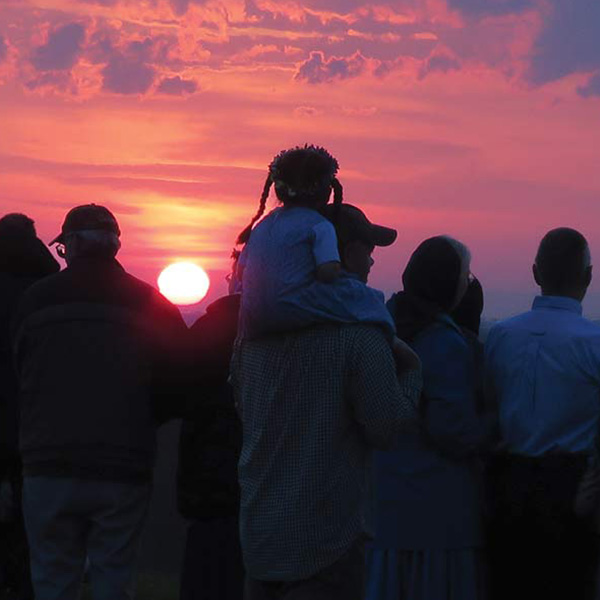Subtotal: $
Checkout-

Dangerous Unselfishness
-

Redeeming the Soul of America
-

Powers and Principalities
-

The Casualties of War
-

For the Love of Neighbor
-

Two Friends, Two Prophets
-

Liberation at the Cross
-

Poem: Gaza Is Not Far Away
-

Staying Rooted and Unbalanced
-

Defending Purity
-

Robert Frost’s “Birches”
-

Editors’ Picks Issue 16
-

Definition of a Good Farmer
-

The Naturalist’s Journal: Sightings
-

Gerrard Winstanley
-

Words that Got Martin Luther King Jr. Shot
-

Justice and the Old Testament Prophets
-

The Prophet We Need Now
-

Readers Respond: Issue 16
-

Family and Friends
-

Everyone Should Serve
-

A Child Named Problem

Were You There?
Children and the Violence of the Crucifixion
By Maureen Swinger
April 6, 2018
Available languages: Español
“I walked the other way. I didn’t want my kids to see.” My friends were discussing a recent family trip to El Salvador that coincided with Holy Week. They had encountered a procession carrying a statue of Jesus after he was taken down from the cross, and the figure was completely drenched in red paint.
Knowing that my friends were agnostic and perhaps unfamiliar with the Easter story, I felt compelled to point out that Jesus’ death was bloody, and that churches across the globe find different ways of commemorating his suffering. They acknowledged this, but... “How would you explain such a sight to your children?”
I imagined how the procession must have appeared to my friend – a gory drama depicting an event that she doubts ever happened. Putting my thoughts into coherent order at the moment when they’re actually needed has never been my strong suit, but I tried:
“I don’t know how I would explain this to my children. It would depend on the questions they would ask. A bleeding statue would startle any child who has been blessed enough to land in a safe home. But how young is too young to grieve for all innocents who die unjustly, in El Salvador, in Syria, or on a hill outside Jerusalem?
“At some point my children do need to know that innocent bodies bleed and die on our earth, every day. They have never seen violence, real or representative. My husband and I try to talk about suffering in a way that they can take into their hearts without sinking under it. But this sight goes deeper, because we believe that Jesus is real. He did die, and he did live, and that story is the single greatest truth we can pass on to our children.”
The conversation ended there, partly because one of those very children hurled himself into our presence, loudly in need of a nap. But that evening, as I tucked the same little boy into bed again, and he was reeling off a roll of all the people he wanted God to remember, I realized that much of what I ought to have said was only then shaping into thought.
I know how the Easter story affected me as a child – viscerally.
I remember the solemn quiet of the adults surrounding me – our community’s old tradition of keeping Good Friday as a silent day of rest.
I remember standing before a large print of Matthias Grünewald’s Crucifixion, my fingers contracting in ghost pain as I saw those agonizingly contorted hands nailed to the crosspiece.
I remember hearing the broken weeping of the strings in the opening bars of Bach’s Saint Matthew Passion.
The empty tomb would mean nothing if there were not first darkness and death.
I remember singing the old spiritual, “Were you there when they crucified my Lord?” The song is a Via Crucis by itself, every step causing me to tremble. The version we sing stops at the tomb – it goes no further.
For children who do not yet fully understand the story, these Good Friday traditions are not empty gestures. They remain as symbols in a child’s heart until they suddenly become real – the first time we choose consciously to hurt someone, to lie, to betray trust or reject love. Then the patterns live, and we recognize their truth, appearing before we realized our need for it. Tempted to lash out, to dodge the charges or blame someone else, we’re instead offered the chance to stop. Be silent. Weep, tremble, and recognize all at once why we need this Jesus: his death, his life.
If we don’t know how to grieve, how can the risen Jesus ask us, “Why do you weep?” That sunrise, that empty tomb would mean precisely nothing if there were not first darkness and death.
That sunrise, incidentally, also has a tradition attached. Just before dawn on Easter Sunday, everyone in our community meets on an open hilltop. We light a bonfire and wait for the sun to lift above the Hudson Highlands. The valley turns gold as the light catches the Shawangunk ridges and the Catskill Mountains beyond. Then the singing begins.
I watch my children watch the sun as we join our voices in the songs of Easter Day, and I think toward them, “One day you will experience this dawning in your heart, the first time forgiveness finds you, and you realize that because of this rising, you also can be made new.”
Photograph from the Bruderhof Archives

Already a subscriber? Sign in
Try 3 months of unlimited access. Start your FREE TRIAL today. Cancel anytime.

































Ken Olstad
“One day you will experience this dawning in your heart, the first time forgiveness finds you, and you realize that because of this rising, you also can be made new.” I keep rereading this beautiful sentence, and it thrills me again and again. I want to share it with everyone I know.
Lynn Curtis
I just read Maureen Swinger's article "Were You There" in the Spring issue, and am so moved to write in appreciation that she would grapple with this so-important topic. Maureen has an amazing way of articulating the subtle and the profound joys and concerns of life, and I always come away from her articles with more insight, more love, and a renewed sense of the divinity of life. Bless you all for your wonderful magazine.
Lisa Crofts
Maureen, I so look forward to each and every article you write for Plough! You have such a way of expression that not only has a depth but allows us, the reader, to feel a closeness to you that is very unique! Thank you for sharing your thoughts with us to help inspire us this time of the year!
Clifton H Folsom
A JOY TO READ.